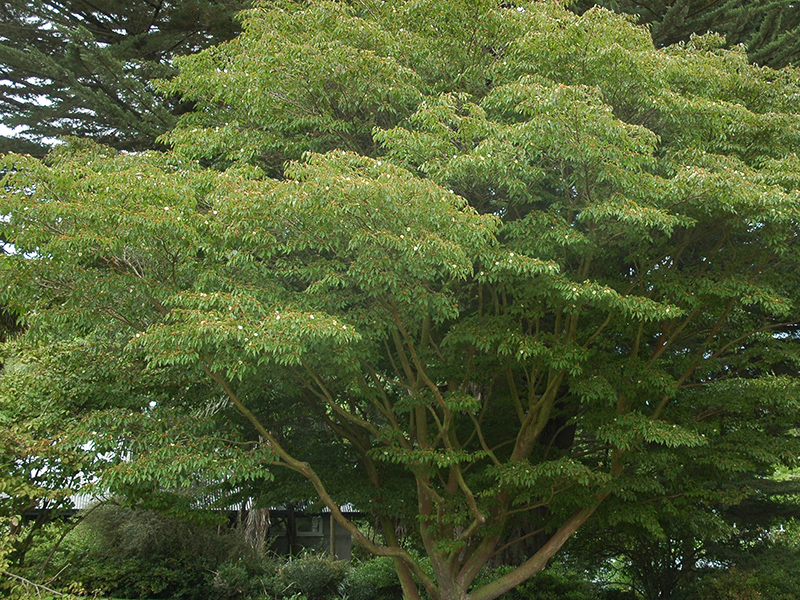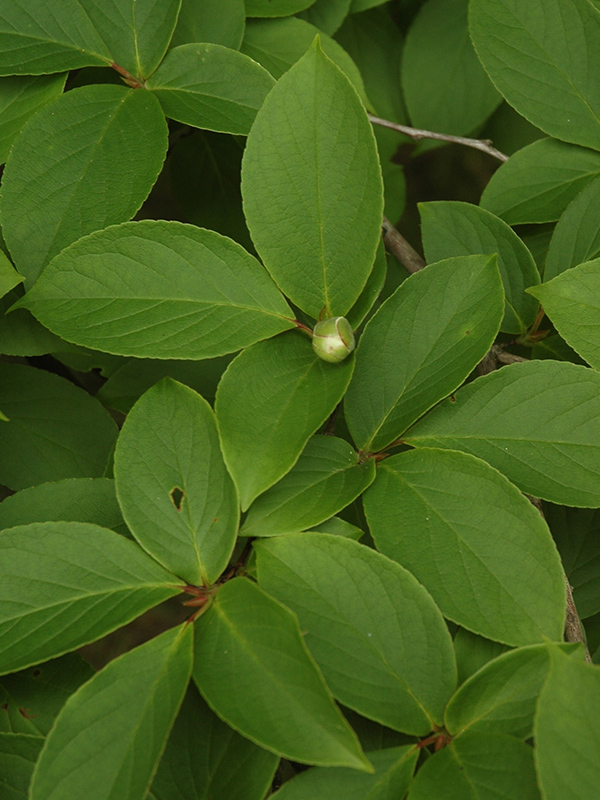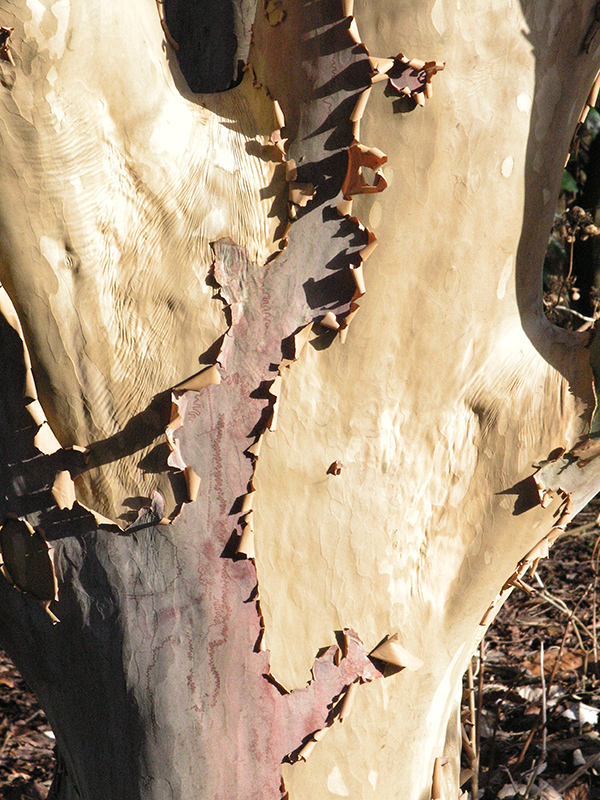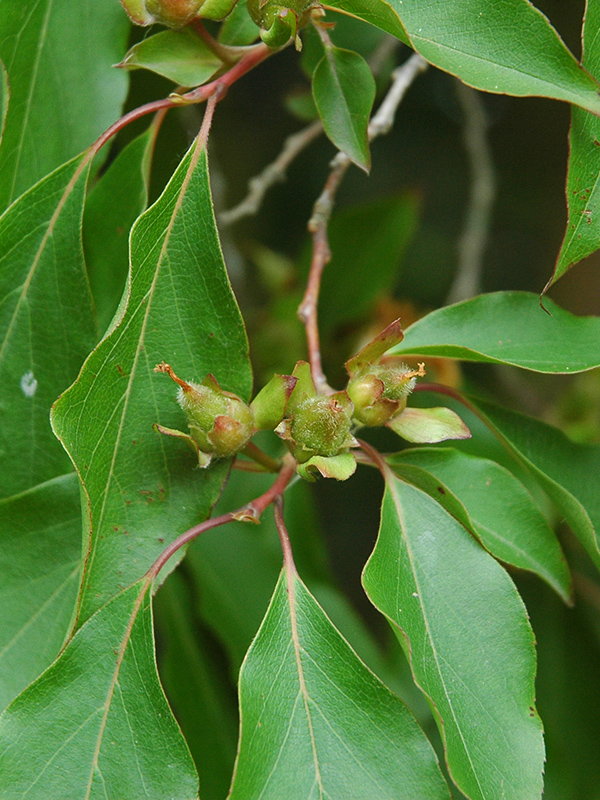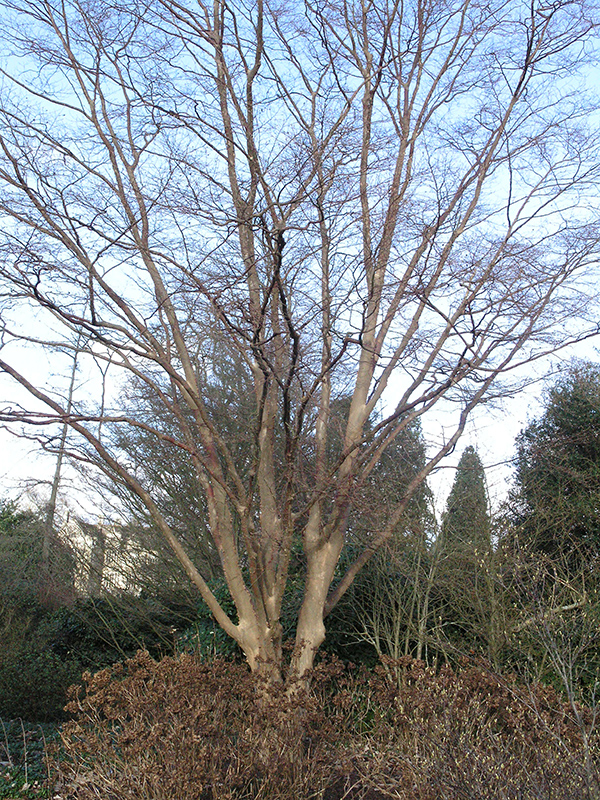
Woody > Stewartia > Stewartia sinensis > Stewartia sinensis
Stewartia sinensis
Chinese Stewartia
Origin: Native to central China.
Mike's
Opinion


"
A spectacular small tree with paper thin, peeling bark, revealing sandstone tones underneath. Underbark is as smooth as marble stone. I
Michael Pascoe, NDP., ODH., CLT., MSc. (Plant Conservation)
"
| Family |
| Theaceae |
| Genus |
| Stewartia |
| Species |
| sinensis |
| Category |
| Woody |
| Type |
| Tree (deciduous), Shrub (deciduous) |
| Pronunciation |
| USDA Hardiness Zone |
| 7b - 8a |
| Canadian Hardiness Zone |
| 7 |
| RHS Hardiness Zone |
| H5 |
| Temperature (°C) |
| -15 -(-9) |
| Temperature (°F) |
| 5 - 15 |
| Height |
| 8 m |
| Spread |
| 5 m |
Photographs
Description and Growing Information
Flowering Period
| General Description |
| Stewartia sinensis is a small tree or large shrub with spectacular bark and fragrant white cup-shaped flowers. |
| Landscape |
| Plant as a specimen in the landscape where it can viewed all year. |
| Cultivation |
| Grows best in full sun, appreciating some shade on hot summer days. Soil should be moist, well-drained, acidic and high in organic matter. |
| Shape |
| Upright with a broad crown. |
| Growth |
| Slow |
| ID Characteristic |
| Large, multi-stemmed shrub or small tree with peeling bark. |
| Pests |
| Generally pest and disease free. |
| Bark/Stem Description |
| Cinnamon-purple bark peels and flakes to reveal smooth, marble-like, tan and brown patches beneath. |
| Flower/Leaf Bud Description |
| 0.5-1 cm imbricate brown buds, pubescent, typically 2-3 scales showing. |
| Leaf Description |
| Medium to dark green, 5-12 ⨉ 4-6 cm. The blade is simple, ovate to elliptical, sharply pointed (acuminate), with minutely serrated margins and a prominent central vein. The base is cuneate leading into the reddish-purple petiole which is pubescent and 1.5 cm in length. |
| Flower Description |
| 4-5 cm in diameter with five white, cup-shaped, fringed petals with imbricate sepals and numerous cream-coloured stamens topped with yellow-orange anthers and often fragrant. |
| Fruit Description |
| 1-2.5 cm, reddish-brown, dehiscent capsules are pointed and divided into five sections, each of which contains seeds. |
| Colour Description |
| White inflorescence, medium to dark green leaves with the potential to turn yellow or red in autumn. |
| Texture Description |
| A fine to medium textured plant. |
| Notable Specimens |
| Wakehurst Place, Ardingly, West Sussex, England. Aberglasney Gardens, Carmarthenshire, Wales, United Kingdom. |
| Propagation |
| Softwood cuttings taken after the terminal bud appears in the spring. Cut 5 - 8 cm off the new, soft growth, cutting directly across where old wood meets new. Remove the lower third of leaves and dip stem into a fungicide solution, followed by a rooting hormone and place in growing media. |
References
Print. Hsu, Eric, Timothy Boland, and Koen Camelbeke. "Stewartia in Cultivation." Plantsman. June 2008: 78-87. Print.
